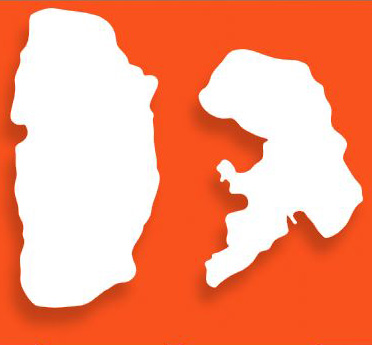Department of Applied Fishery and Aquaculture (DAFA)
Since the establishment of the institute a salmonid hatchery and nursery with capacity of 5 millions of eggs, alevins or fingerlings of one of the endemic Lake Ohrid trout species (Salmo letnica, Karaman 1924) is included in sense of aquaculture of the endemic salmonids for restocking purposes at that period. During the eight decades of development of tools for freshwater species conservation and restoration the number of collected fertilized eggs and released fries was varying till number of 16 million in average at annual level. In certain periods this number was even bigger – exceeding 20 million. The most important moment till 2004 year is that all the caught spawners in average of 25 tons was going at the fish market. From 2005 the stocking is with 2,5 million fingerlings at age of 9 months after fertilization, all the fished spawners are returned into the lake – “catch and release” method, with proof of their future survival confirmed by different tagging techniques
Regarding the developing processes of “artificial” spawning” of the native salmonids various techniques were implemented like: sperm cryopreservation, laser treatment of the spermatozoids and fertilized and non-fertilized eggs, crossbreeding etc. Also cultivation of the outmost endemic salmonid Lake Ohrid belvica (Salmo ohridana, Steind.1892) has been developed, but from biodiversity conservation aspect this isn’t implemented like standard process for lake’s restocking program.
Besides the hatchery activities other responsibilities of the Department of Applied
Fishery and Aquaculture (DAFA) are fish population ecology, human impact (habitat changes and restoration in lakes and rivers; pollution impact – heavy metals, POPs; fishery impact), genetic radiation, hybridization – natural and induced for farming purposes, species conservation, fish and fisheries monitoring, fishery management plans and strategies etc.
DAFA is representing the essential unit for official registered reproduction center for wild freshwater fish species for R. Macedonia. From other hand Hydrobiological institute in Ohrid is the Authorized Institution for fisheries, which includes any kind of fishing in the national open waters (lakes, rivers and reservoirs) as well as fish farms control and supervision.
The aquaculture facilities are covering 1200 m2 under fish hatchery, nursery and breeding ponds, 500 m2 experimental aquaculture earth ponds.
Research vessel – 12 m research boat, fully equipped is used for the realization of the artificial spawning (collecting fish eggs and fertilization in situ).
Main research lines:
– Lake Ohrid Annual Restocking Program of endemic trout species national and transboundary (since 1935).
– Conservation and restoration of endemic and endangered trout species (S. ohridana, S. typicus, S. aphelios, S. peristericus, S. macedonicus, etc.)
– Cryopreservation and laser induction
– PoP’sand heavy metals in fish tissues
– Fishery master plans (protection and utilization) of the fish stocks in Macedonian running waters and lakes: determining TAC (total allowable catch) quotas, minimum allowable catch size per species, determining mitigation measures,
– Fish conservation and protection on transboundary level
– Ecosystem approach on fishery
– Fish and fisheries monitoring
- Aquaculture – knowledge transfer





